NatureZen: All Eyes on Me
words and photos by Melissa McMasters
One of the things that fascinates me most as a naturalist is the ways animals have evolved their appearances over time to suit some specific purpose. Last summer, we explored how moths camouflage themselves to blend perfectly into their habitats, hiding themselves from their many predators. But other creatures have evolved different means of deterrence, and one of those is the presence of false faces.
Caterpillars are one of the preferred foods for many creatures, especially birds, so they need some way to defend themselves. The Eastern tiger swallowtail caterpillar starts off brown, looking like an animal dropping. But as it grows past this camouflage stage, it develops markings on the front of its body that look like eyes. (It also turns green!) This gives it the appearance of a snake staring back at its predator, which sometimes scares off the threat. These eyes are not actually on the caterpillar’s head; if you look closely, its real head is inconspicuously tucked at the bottom of its body, and is much less intimidating than the false one.
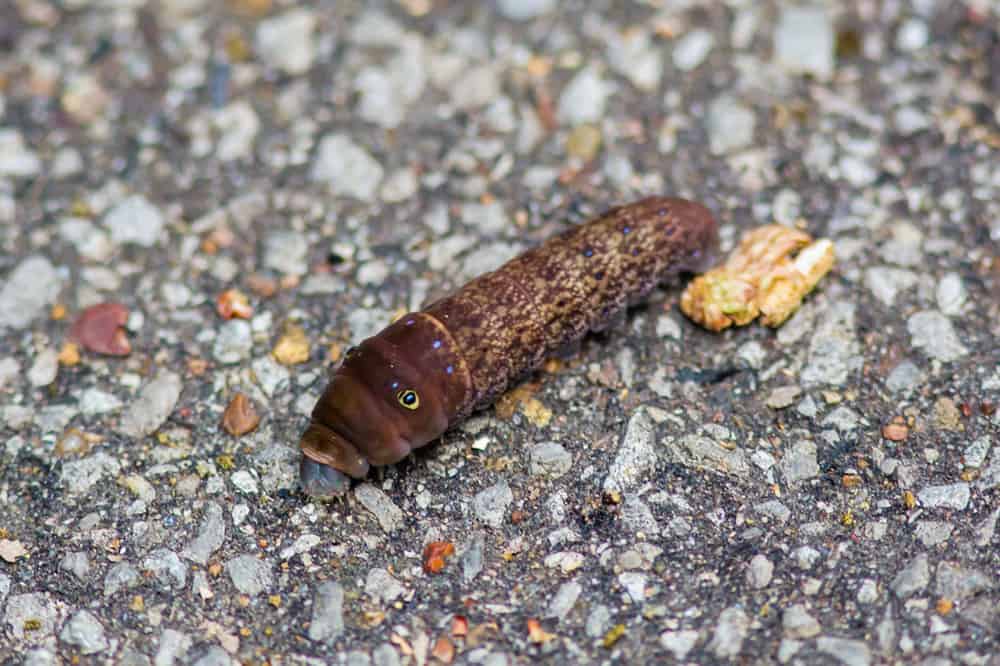
Studies have shown that eyespots in caterpillars most effectively deter bird predators when they’re located on the front of the head, mimicking a snake. Butterflies may also use this strategy of using eyespots to suggest a predator. But they also might use the markings to disorient. As with this common buckeye, a butterfly may employ more than two eyespots. The fluttering of its wings may create a disorienting effect due to the high contrast of the spots.
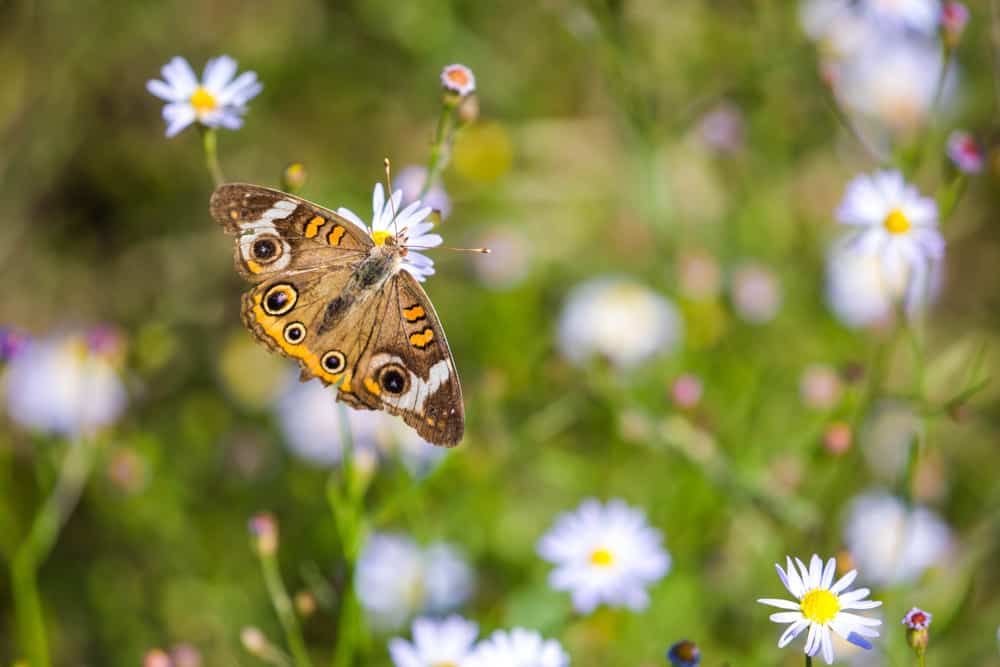
The ruddy daggerwing employs a couple of deterrence strategies: when its wings are closed, it looks like a rusty leaf. When they’re open, an entire face is revealed! To me, the eyespots in combination with the daggerwing’s tails create the illusion of a bat. It certainly seems like this “face” might confuse a predator, particularly if the butterfly were flying near orange or brown leaves where it could blend in more.
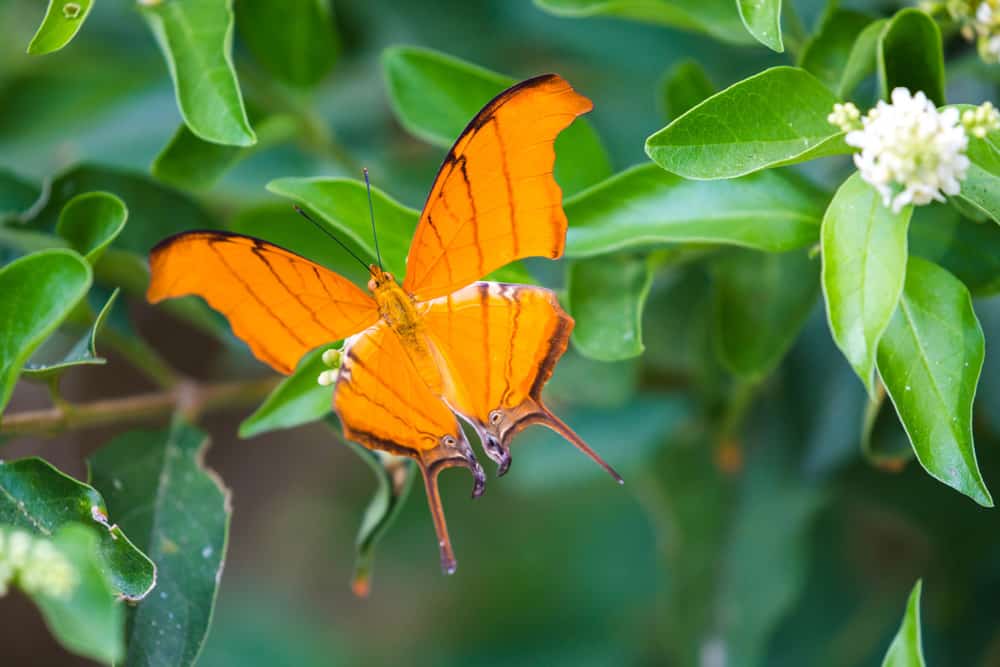
Sometimes a butterfly’s false face reflects the face of its predator back onto itself. Perhaps this is a camouflage trick, or perhaps it’s a deterrent to other predators. Either way: behold the butterflies who have incorporated jumping spiders into their markings (!!!). On the left is a jumping spider for reference; now check out the bottom wing of this Western pygmy-blue butterfly. Do you see the four spider eyes? They even have shading to look like light reflecting off eyes! Please name one thing cooler than this in the entire world. (Hat tip to Rosemary Mosco of Bird and Moon Comics, whose Twitter thread brought this phenomenon to my attention.)
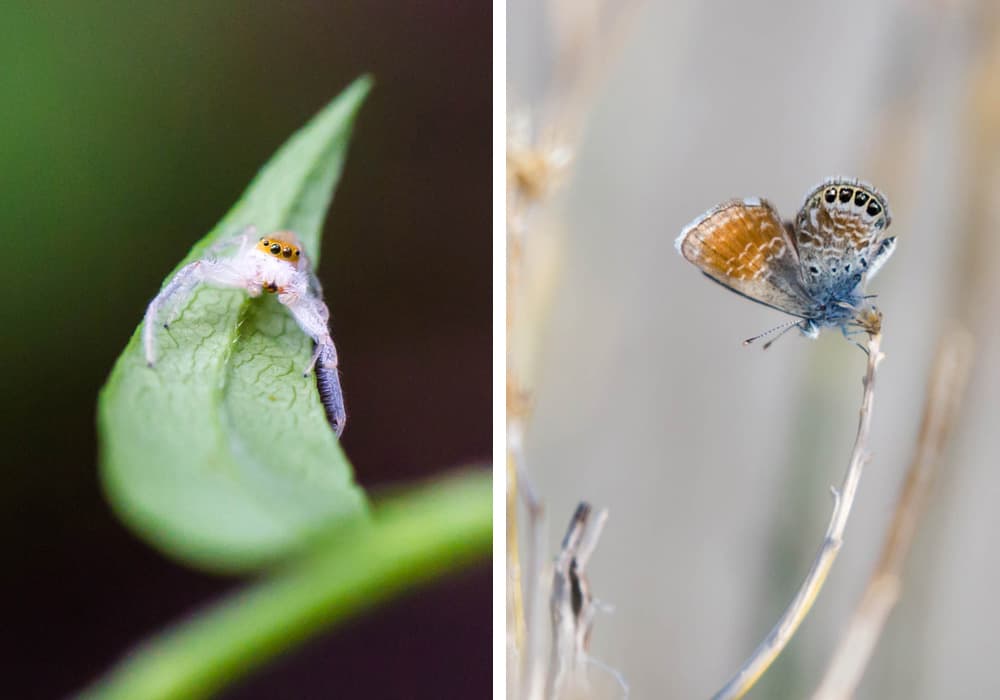
The gemmed satyr goes one step further and replicates a full jumping spider body, not just the eyes. The eyes are iridescent (it’s where the name “gemmed” comes from), but I never noticed the purpose of the rest of the markings, which are such a departure from the rest of the wing pattern.
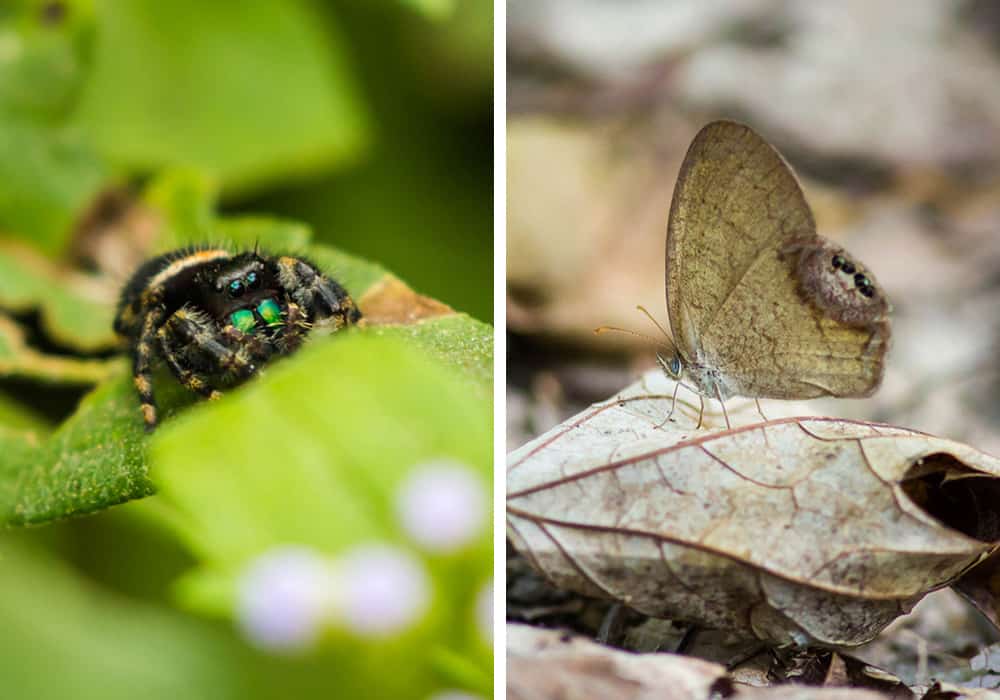
Have you noticed yet where all these false eyes and faces are located? That’s a very important part of the story! Take this red-banded hairstreak. It has evolved tails that look a lot like its antennae, adjacent to small spots the same color as its own eyes. This creates the impression to predators of an entire false head. When attempting to escape from a spider or bird, the hairstreak can vibrate its false head to distract from the real one, sacrificing this non-essential part of its body so that it can escape.
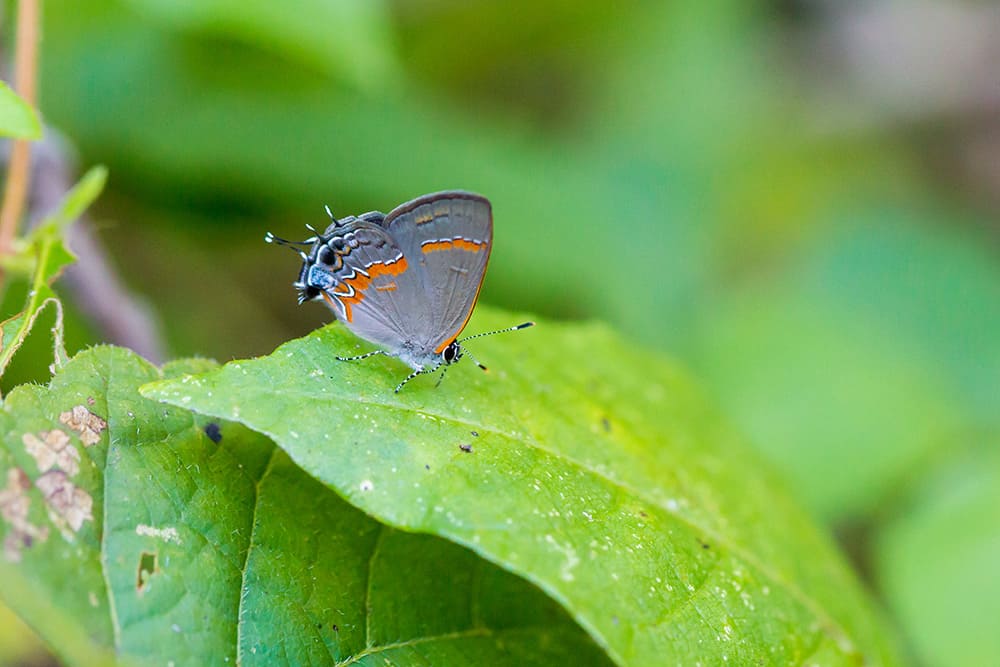
As you can see, this great purple hairstreak has been preyed upon, losing a tail and the “false face” part of one wing. But it lived to nectar another day.
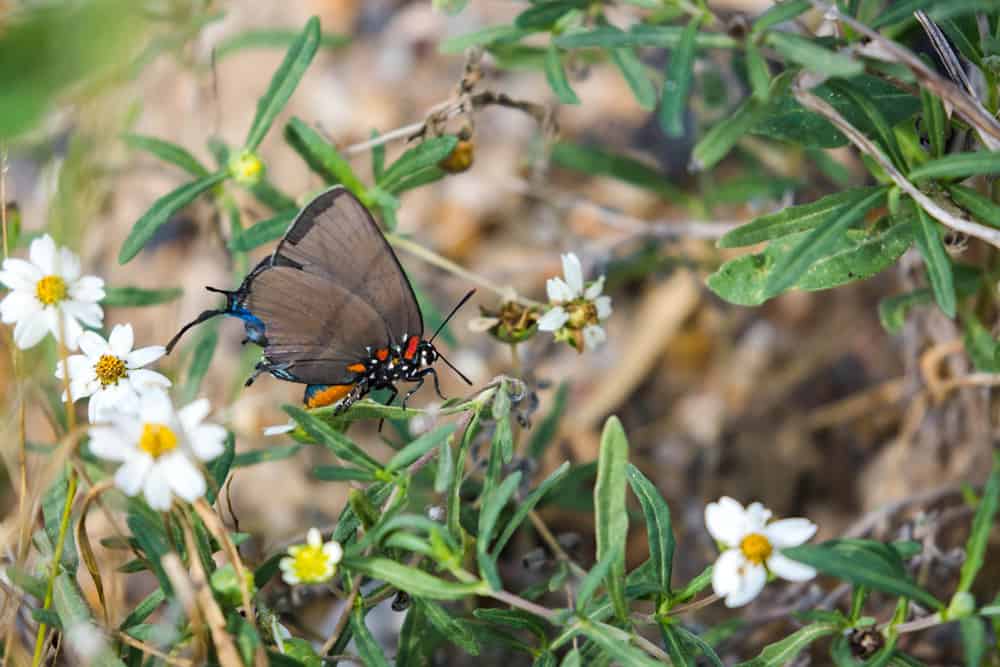
We’ve spent a lot of time here on eyes and faces meant to keep other creatures away, but that’s not the whole story. The male peacock is covered in false eyes, and he does anything but blend in. That’s because his eyespots are meant to entice a female–he unfurls his feathers to reveal his magnificence! Scientists have found that when peacocks’ feathers are pruned, giving them fewer eyespots, females are less likely to choose them.

Finally, there are some insects whose markings evoke human faces, or at least human-face emojis! Is there an evolutionary purpose to looking like the 😐? I don’t think science has caught up to that question yet. I’ll be waiting!
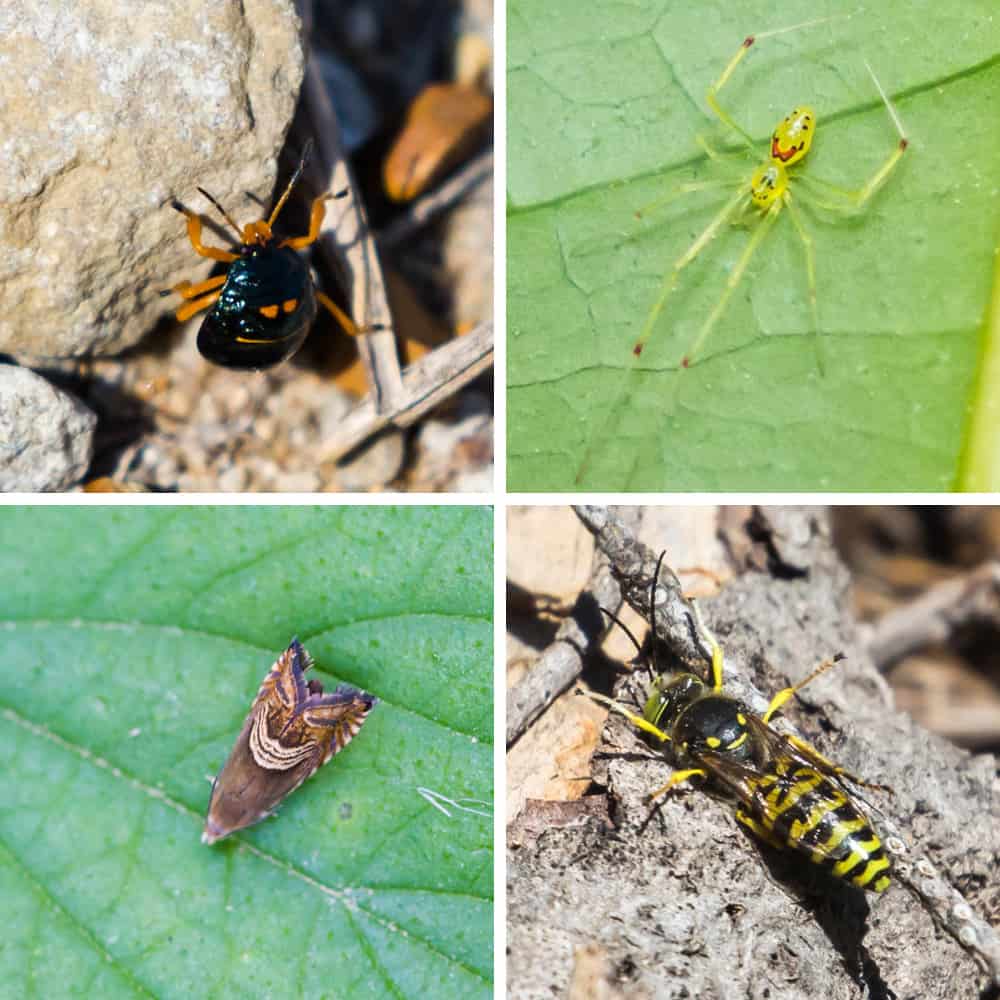
If this subject fascinates you as much as it does me, here’s some further reading:
- Six ways animals use fake eyes (BBC)
- Jumping spider vs. hairstreak butterfly (Florida Museum)
- Rosemary Mosco’s children’s book “Butterflies are Pretty…Gross!”
Want to put a smile on our faces? Become a member of Overton Park! You can also get NatureZen in your inbox by subscribing to our e-news.



